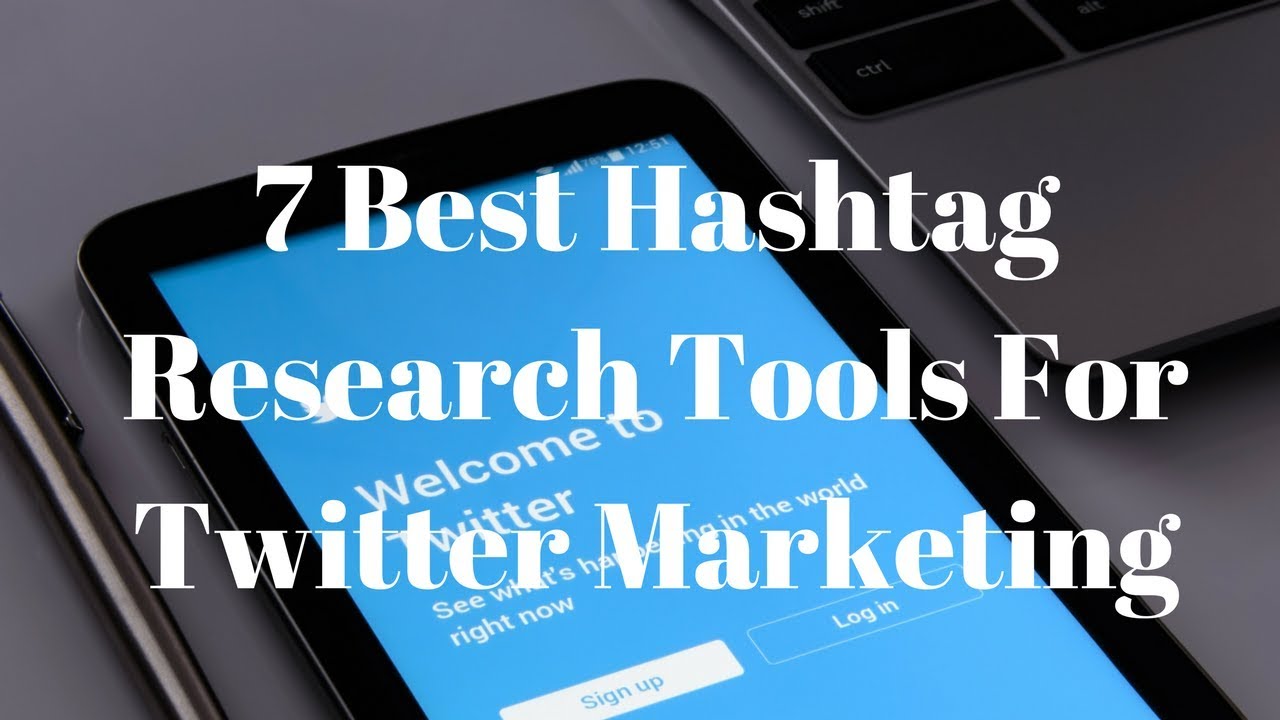How Slack Grew To 8 Million Subscribers In 5 Years
As of 2018, Slack has grown to 8 million subscribers in just five years.
Despite its huge success, this collaboration tool for teams has humble beginnings. In fact, it was a by-product called Tiny Speck that Stewart Butterfield’s team had built when they were working to develop an online game. The game didn’t fly; Slack is the Phoenix that rose from its ashes.

Slack’s 2019 rebranded logo
This article gives you insight into how Slack managed to become an 8 million subscriber app in such a short timeframe.
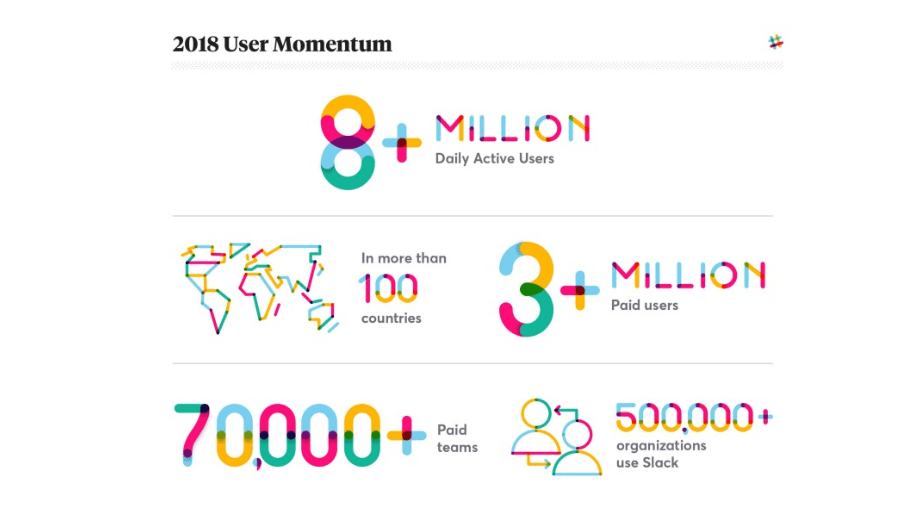
slackhq.com
Slack is an enterprise messaging tool which is aimed at assisting team members to chat, work on projects together, and share links and more in real time.
Read our previous Growth Stories: Spotify, Canva.
Slack was developed using the following 6 growth strategies:
1. Word-of-mouth marketing
Stewart Butterfield (CEO and co-founder) and his team began working on Slack in 2012.
Before their preview release in August 2013, Stewart and his team had begun asking friends and acquaintances working at other companies to give Slack a go and see what they make of it.
This helped the team discover how the product fitted the market and catered to customers’ needs. It also helped them work on core features and basic functionality.
The word-of-mouth approach worked brilliantly because on the release day 8,000 people signed-up to Slack. Two weeks later, that number had grown to 15,000. By February 2015, when the tool was publicly available, Slack had acquired 500,000 daily active users. Within four months, this number had doubled to 1.1 million active users.
Today Slack has 8 million daily active users with 3 million paid users and counting. If you are an SEO enthusiast, here is another benefit which will make you feel warm inside: 100.000.000 organic traffic/month of which 90% is driven by word-of-mouth.
Our mission at Slack is simple: to make people’s working lives simpler, more pleasant, and more productive. The experience our users have working in Slack is core to our culture and to our business success.
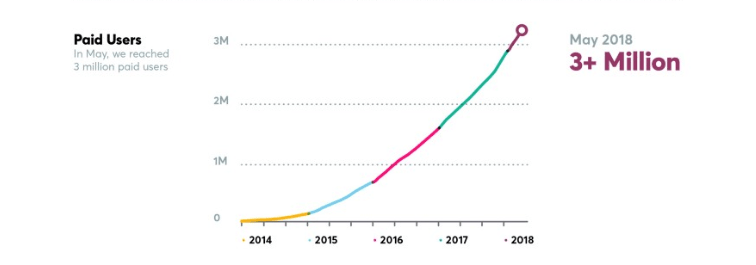
slackhq.com
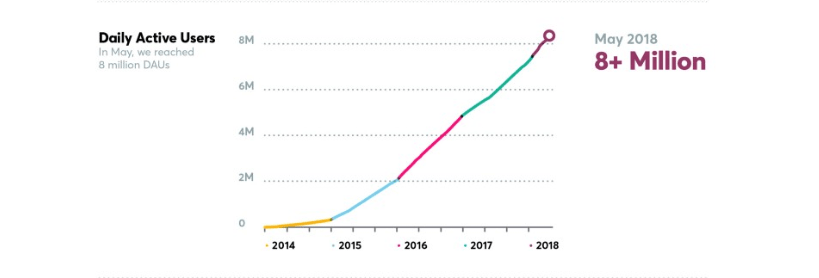
slackhq.com
2. Integration with other providers
We’re selling a reduction in information overload, relief from stress, and a new ability to extract the enormous value of hitherto useless corporate archives. We’re selling better organizations, better teams. That’s a good thing for people to buy and it is a much better thing for us to sell in the long run. We will be successful to the extent that we create better teams.
Stewart Butterfield, CEO and founder
Slack is not just a messaging app, it’s a collaboration hub that brings the right people together with the right conversations, information, and tools they use at work. And to be productive and efficient, teams need to make the most of their time. So integrating with other tools that teams use on a regular basis was paramount to Slack’s success.
There are more than 1500 apps in the Slack App Directory. Slack’s website attracts 100.000.000 visitors/month.
Chris von Wilpert has analyzed how the integrations are contributing to Slack’s website organic traffic. Here are his conclusions:
- Slack ranks on the first-page search results whenever anyone searches a product with which Slack integrates;
- Slack managed to achieve this by creating an individual landing page for each of its integrations;
- The integrations bring in high-quality referral traffic.
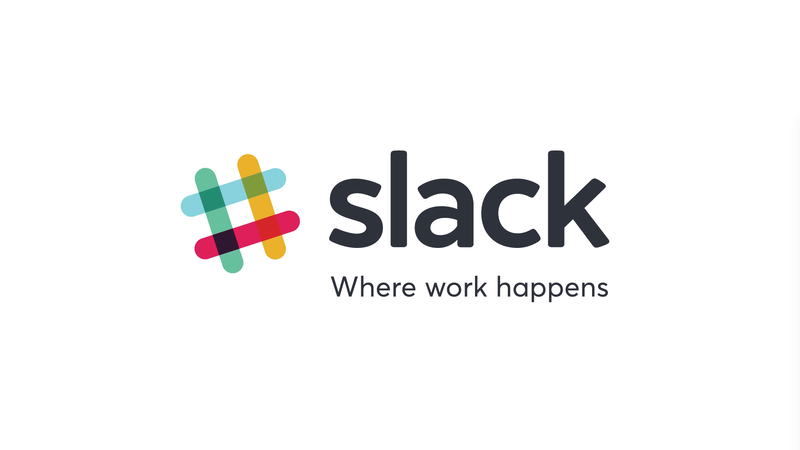
3. Content marketing
Content marketing didn’t become part of Slack’s growth strategy until 2014.
Unlike other companies, the team growing Slack made an interesting and bold choice: to host their company blog outside slack.com.
Slack’s blog is called SlackHQ.com and it was first a publication on Medium.com, the online blogging platform. It was bold and risky at the same time, and it worked out great for Slack. The content published here took full advantage of Medium’s features and was often featured on Medium’s homepage in the ‘Popular On Medium’ section.
The blog managed to acquire over 125.000 followers, but in 2018 it was moved to slack.com.
4. Twitter
We bet heavily on Twitter. Even if someone is incredibly enthusiastic about a product, literal word-of-mouth will only get to a handful of people – but if someone tweets about us, it can be seen by hundreds, even thousands.
Stewart Butterfield, CEO and founder
Twitter is Slack’s most important social media platform.
Here is how Slack used the 180-character (now 240) social media network:
- Build brand awareness;
- Define its tone of voice;
- Keep their users up-to-date on changes, improvements, company life;
- Get customer feedback;
- Communicate with customers;
- Prevent the Slack support team from scaling up massively: Slack’s customer support team is made up of just 18 people, with a group of 6 manning Twitter 24/7.
Slack’s Twitter account has 374K followers, but it is most known for being home for the Slack Wall of Love where Slack subscribers come to express their love under @SlackLoveTweets.
Read Stewart Butterfield’s success story.
5. Dear Microsoft
On November 2016, Microsoft announced it was launching their own competing product.
Slack took this opportunity to gain media attention by publishing a letter addressed to Microsoft as a full-page ad in the New York Times.
Here is the letter’s first paragraph:
Dear Microsoft,
Wow. Big news! Congratulations on today’s announcements. We’re genuinely excited to have some competition.
We realized a few years ago that the value of switching to Slack was so obvious and the advantages so overwhelming that every business would be using Slack, or “something just like it,” within the decade. It’s validating to see you’ve come around to the same way of thinking. And even though — being honest here — it’s a little scary, we know it will bring a better future forward faster.
While the letter sets out to give Microsoft “some friendly advice”, it does so by highlighting the principles and values which Slack was built upon and taking a few jabs at Microsoft at the same time:
- It’s not about features, it’s about “a degree of thoughtfulness and craftsmanship that is not common in the development of enterprise software”;
- Thousands of hours talking to customers;
- Internal transparency and a sense of shared purpose;
- The necessity of working with an open platform and integrations: “We know that playing nice with others isn’t exactly your MO, but if you can’t offer people an open platform that brings everything together into one place and makes their lives dramatically simpler, it’s just not going to work.”
- And ultimately love: “We love our work, and when we say our mission is to make people’s working lives simpler, more pleasant, and more productive, we’re not simply mouthing the words.”
Here’s the final paragraph:
So welcome, Microsoft, to the revolution. We’re glad you’re going to be helping us define this new product category. We admire many of your achievements and know you’ll be a worthy competitor. We’re sure you’re going to come up with a couple of new ideas on your own too. And we’ll be right there, ready.
— Your friends at Slack
6. Fair Billing Policy
Like many other service apps and tools, Slack uses the freemium business model: free, standard and plus subscriptions.
Out of the thousands of hours of talking to early adopters and customers, the team behind Slack found one particular paint point and came up with a solution.
What is preventing the customer on free subscription from upgrading to a paid one?
One reason is that companies are charged for a number of seats regardless of how many employees are actively using the software. A second reason is that sometimes employees become inactive so the company loses money because it paid in advance.
To this problem, Slack found the following solution: Fair Billing Policy.
Here it is:
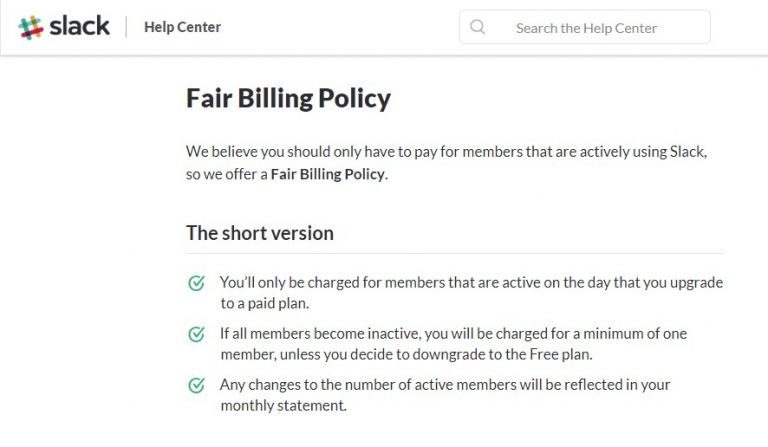
Big companies like Airbnb, IBM, Oracle, Target, BBC, Workday and E-Trade count among Slack’s customers with approximately 70,000 businesses paying for the company’s services.
According to finance experts, Slack is currently valued at $8.3B and it doesn’t look like it is slowing down.
Join the Conversation
We’d love to hear what you have to say.
Get in touch with us on Facebook Group and Twitter.
How To Proper Use Twitter’s Hashtags For Your Business
“When you set aside time to research what hashtags are the most popular with your customer personas, you’re better able to target users who reflect your ideal audience. A research tool can help you monitor hashtags, improve influencer outreach, discover demographic and geographic information, and gauge sentiment. With the right toolbox, you can simplify social marketing on Twitter,” wrote socialmediaexaminer.com.
So here are some of the best hashtag research tools we found for you:
RiteTag helps you get instant hashtag suggestions for images and texts on desktop and mobile, based on real time hashtag engagement. Group hashtags to easily compare them on RiteTag and quickly add to posts from RiteForge and RiteBoost.
This tool is useful in giving you immediate feedback on your hashtag choices. It color-codes hashtags, letting you know the hashtag strengths, and it’s available “wherever you do social”. Moreover, it will also alert you when new hashtags emerge for your topic, and it allows you to group hashtags into “Tag Sets” for the ease of comparability.
Hashtagify.me helps you analyze your hashtags through a variety of different data, but one of the most popular features remains their related hashtags and popularity tools. Hashtagify helps you accelerate your business growth, brand awareness and marketing effectiveness through intelligent Hashtag Marketing. The technology used helps master hashtags far more quickly and to enhance your social media performance on Twitter and Instagram. Another feature that is very interesting and perfect for 2018 is “Top Influencers.” This is an great tool if you’re trying to find influencers within your industry to follow and interact with.
The free Hashtags Finder allows you to search among Twitter and Instagram hashtags and pick the best ones for your needs based on their popularity, relationships, languages, influencers and many other metrics.
ExportTweet allows you to track hashtags, keywords, and accounts and helps you find top tweets, related hashtags, influencer data, device source, geographic location, and more. The free tool gives information on the last 100 tweets, but the paid searches offer unlimited tracking time and unlimited report downloads.
With Tweet Archivist, you get real-time data from the day of your search with the number of tweets and impressions for the day With the free report, you’ll see the top associated words, top URLs associated with the hashtag, the source of the top tweets, top languages used, user mentions, associated hashtags, and an influencer index. It allows you to measure campaign effectiveness, determine sentiment and view the most popular images associated with the tweets for this term. In addition, it does a language breakdown and a volume analysis based on number of tweets per day.
Socialert is a budget-friendly tool, making it perfect for individual users or small businesses. You can do a free search before the tool asks you to upgrade to a paid plan. The free search will analyze 300 tweets over a 7-day period to give you a snapshot of relevant data. You’ll see the hashtag reach and impression rate along with geographic data and overall sentiment.
Will Twitter rise up in 2018?
As in the last years Facebook took the face off Twitter, specialists started to wonder if Twitter isn’t close to taking MySpace’s road and die. and many were starting to believe that will be the reality. But, in fact, the end of 2017 and 2018’s start show a revival of the social media platform.
“Twitter stock has been on fire, soaring some 16% in the past five days, including an 11% surge on Monday, thanks to a major endorsement from J.P. Morgan analyst Doug Anmuth, who named Twitter among the firm’s best stock ideas for 2018. Investors wasted no time buying into the idea that Twitter’s worst days are behind it,” wrote Richard Saintvilus for Nasdaq at the end of December 2017.
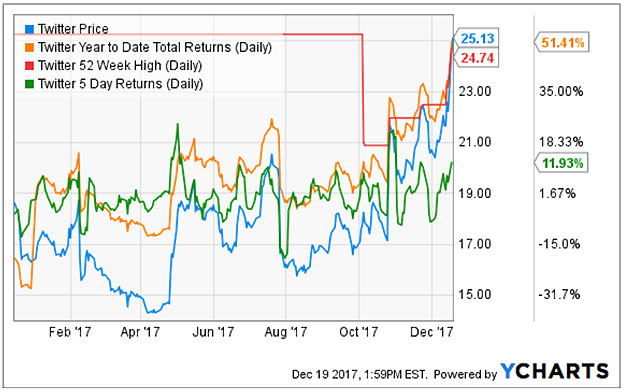
The company’s improved live-streaming capabilities is one of several factors Anmuth sees as increasing Twitter’s growth, including an expected 10% increase in daily active user growth in 2018 and an advertising revenue growth greater than 8 percent. Moreover, he expects the company to be profitable in 2018, which would mark a significant leap in the company’s investment profile.
“We believe both the TWTR story and financial results will strengthen over the next year as the company continues to build on its differentiated value proposition for users & returns to revenue growth,” wrote Doug Anmuth,quoted by CNBC.
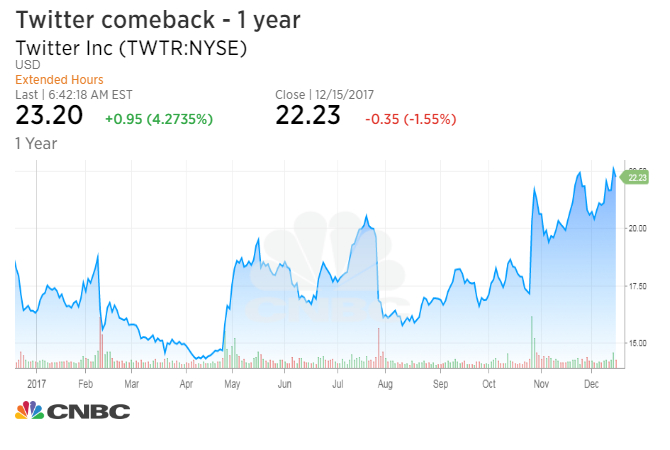
Moreover, according to MarketWatch, Bloomberg is bringing a news network to Twitter, in partnership with heavyweights including Goldman Sachs, Infiniti and AT&T. That is a great marriage between content and advertisers, proving the platform has a bigger monetization strategy than just random sponsored tweets. Twitter also launched pre-roll ads that can play before livestreams on its Periscope video platform. More recently, the company has started offering a more accessible way for developers to tap into content and data on its platform. There have also been rumors of a paid-subscription service on Tweetdeck for its most loyal and devoted users.
How the UK marketers feel towards the GDPR
Only 11% of marketers already have systems in place to ensure they don’t fall foul of the legislation, as shows data from YouGov and The Chartered Institute of Marketing (CIM). From May 2018, the EU General Data Protection Regulation (GDPR) will come into effect. The reform is one of the most significant in years at 200-pages long and formalizes concepts like the ‘right to be forgotten’, data breach accountability, data portability and more. Huge fines of €20m, or up to 4% of global revenues, have been threatened for non-compliance.
The study into the challenges and opportunities facing those in the industry was based on two separate surveys from YouGov and the CIM. Key findings from the former, which surveyed 225 marketers found that for those in the UK, Brexit (55%) and a recession (47%) were the top concerns for the year ahead. Only 13% of those quizzed said that GDPR would be a significant cause of worry, with just 31% admitting they do not know whether their business has taken steps to ensure they’re compliant.

source: The Chartered Institute of Marketing (CIM)
The CIM’s dataset from 112 members revealed that 70% of marketers are concerned about factors outside of their control, including data breaches, impacting on their brand. The introduction of GDPR will have huge ramifications for marketers who handle personal data and also place demands on businesses to demonstrate informed consent to use consumers’ personal data for marketing purposes – something marketers have previously expressed anxiety over.
Chris Daly, chief executive of the CIM said that while marketers were conscious of impending challenges like Brexit and other digital trends, they have to make sure it doesn’t obscure other issues.
“It is concerning to see that GDPR has not been fully considered, given the wide-reaching impact this will have on business areas which deal with data – marketers’ natural habitat. Given the concerns that emerged from consumers last year over how businesses collect and use customer data, marketers must make sure they are prepared and ready for GDPR sooner rather than later. By staying on the right side of the incoming legislation, marketers are best placed to safeguard not only their business’ reputation, but also its finances.”
The report, “The Challenges and Opportunities facing Marketers in 2017”, features the results of a YouGov survey of 255 marketers, in which more than half (55%) said the UK’s exit from the European Union was among their top concerns.
As a result of the UK’s looming constitutional changes, 54% of marketers said they expected to see an increase in “Brand Britain” messaging, and 19% said they were already looking at how to incorporate this into their own marketing.
Further data from a survey of 112 CIM members, conducted via Survey Monkey, reveals that:
- 70% of marketers are concerned about factors outside of their control (data breach, tax scandals, workers’ rights problems) impacting on the brand
- 95% think marketers need more influence and involvement with the broader business in order to protect brand reputation
Despite the influence social media gives consumers, only 18% of marketers are confident they can handle anything social media throws at them.
One of the key drivers for this is the impact of social media, which gives consumers a platform to shine a light on bad brand behaviour – in fact, 89% of marketers believe the Internet, and social media in particular, gives consumers more power to effect change over brands. However, 21% of marketers feel that while they can manage social media daily, they would struggle in the midst of a Twitter storm. Half of marketers (49%) also say they are not getting the most out of their social media, with 22% attributing this to a lack of investment. While marketers are trying to keep up with changing customer expectations, it would seem some are being held back by the business.
